Toshiba 55WL863 Review
Toshiba 55WL863
Toshiba finally brings some of its ‘CEVO’ processing power to the UK in the 55WL863, with mostly excellent results.
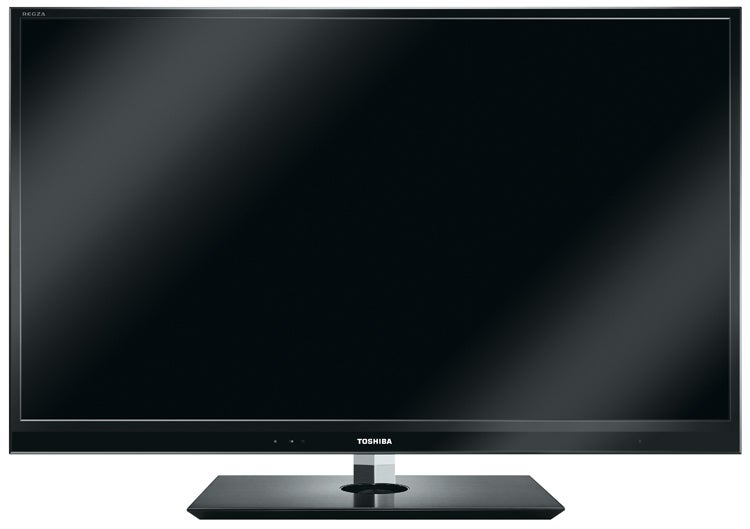
Verdict
Pros
- Outstanding build quality
- Mostly excellent pictures
- Good Value
Cons
- Currently undernourished online features
- Crosstalk with 3D
- minor backlight consistency flaws
Key Specifications
- Review Price: £1800.00
- 55in LCD TV with edge LED lighting
- CEVO Engine processing
- Toshiba Places online system
- Freeview HD and satellite tuners
- Active 3D playback
Usually when we talk about Smart TVs these days, we’re talking about TVs with some level of online functionality. But with the TV and PC worlds becoming ever more convergent, we’re starting to see more TVs that deserve to be considered ‘smart’ not just because they go online but because they carry prodigiously powerful onboard processors. Maybe we should call such TVs ‘clever’, to avoid confusion.
One such clever TV is Toshiba’s new 55WL863. Which at first seems surprising given how the Japanese brand has been focusing predominantly on the ‘no-frills’ UK TV market for the past couple of years.
In reality, though, the surprise is not that Toshiba has made a processing-heavy TV but rather that it’s taken the brand so long. For we’ve been cooing over Toshiba’s incredibly powerful CEVO TVs in Japan for nearly three years now, counting the days before they arrived in the UK. A count that was starting to look like it was never going to end. 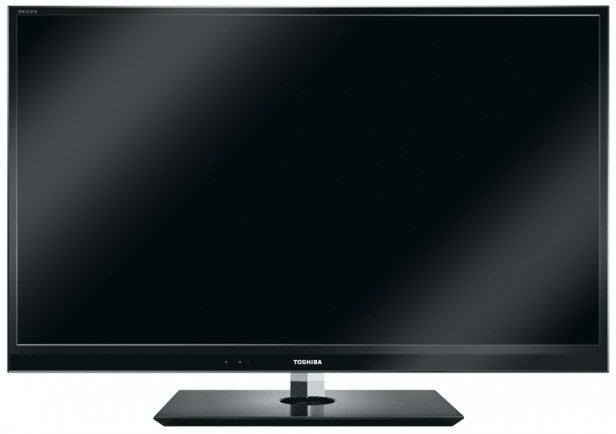
But the 55WL863 finally gives us at least some of Toshiba’s CEVO cleverness. It’s not quite as highly specified and uncompromising as Toshiba’s Japanese CEVO sets. But it’s definitely one of the most powerful TVs launched in the UK to date.
It’s also one of the most robustly built TVs we’ve ever seen. Its body has been hewn from a hunk of high-grade, cold-touch metal that raises hopes of some uncompromising innards, too. Its bezel is unusually slender as well, and its rear is almost unfeasibly skinny.
It has to be said that the design’s quality only shines through when you get up close. From a distance the set doesn’t look particularly stylish. But overall Toshiba’s decision to call on the design assistance of the Jacob Jensen Studio has paid off.
If you’d prefer a silver finish, incidentally, then you should check out the WL863 companion range, the YL863s.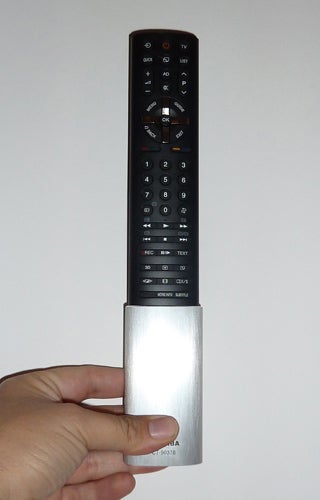
The 55WL863’s connections include four HDMIs, which are all built to the v1.4 standard in keeping with the set’s built-in full HD active 3D capabilities. There are also two USBs capable of both video/photo/music file playback as well as recording from the TV’s built-in Freeview HD or satellite tuners.
A LAN port, meanwhile, allows connection to either a networked, DLNA-enabled PC or Toshiba’s ‘Places’ online service. Or you can use a built-in Wi-Fi system if it’s more convenient.
The satellite tuner mentioned earlier is unfortunately not a Freesat one, meaning you end up with lots of foreign language and minority interest channels that will probably make the satellite tuner a pretty pointless option for most people. This likely explains why Toshiba doesn’t mention it in its promotional material.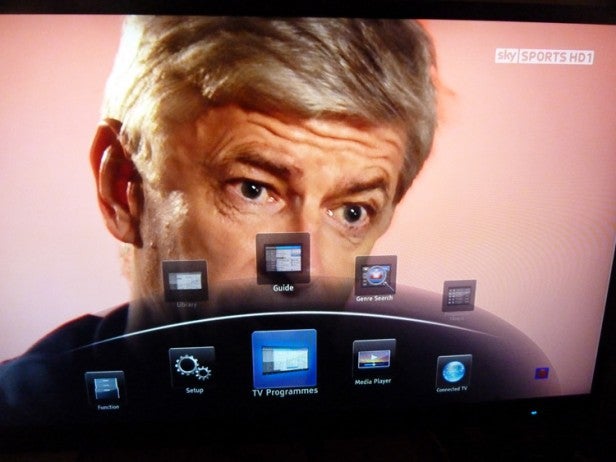
The 55WL863’s CEVO Engine functionality permeates many levels of its performance and features. For a start, it supposedly improves the set’s general colour, contrast, detail and motion performance. But it also drives a couple of intriguing new features.
The first is a version of Toshiba’s Resolution system that boosts the perceived sharpness of full HD 3D viewing as well as working on 2D, while the second is a new NetResolution system designed to improve the usually compression-heavy appearance of online sources.
The CEVO system is also integral to the 55WL863’s ‘local dimming’ engine, to supposedly deliver this often flawed edge LED feature with more intelligence and sensitivity than normal. The 55WL863 sports a first for Toshiba’s 3D TVs too: a subtle but impressively accurate 2D to 3D conversion system. And yes, this too is delivered via the CEVO Engine.
Finally, in a bid to make the 55WL863 more attractive to the AV enthusiast market, the CEVO engine powers a new autocalibration system. Cough up an extra £250 or so for Toshiba’s TPA-1 kit and you’ll get yourself a colour and light meter that plugs into one of the 55WL863’s USB ports and automatically calibrates your picture settings in conjunction with gamma and colour test signal sequences initiated from the TV’s onscreen menus.
While this is a great idea on paper, though, we can’t envisage many people spending so much on the calibration accessory. Even though it does produce a discernible boost in the accuracy of pictures as measured by video industry standards. 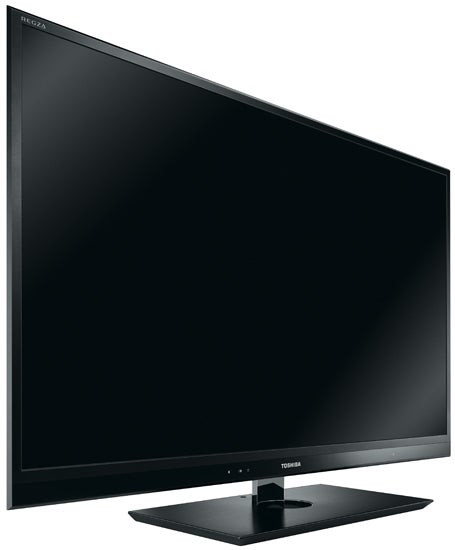
We’re also unconvinced that many mainstream users will actually like the ‘accurate’ pictures the 55WL863 produces, given their lack of dynamism compared with many of the TV’s out of the box presets. (We base this comment on our experience of trying and failing to persuade many friends and family members to use accurate picture settings instead of the more dynamic ‘out of the box’ settings.)
Final features of the 55WL863 worth mentioning are its attractive operating system, based around a well-realised ‘dual wheel’ presentation, and Toshiba’s Places online system.
Places is also very well presented, with good use of high quality graphics and some useful efforts at personalising the online experience to different users in your home via such tools as individual email accounts and favourites lists. The set even carries a built-in camera and face recognition software so that it can, in theory, recognise who’s using the TV and automatically adjust the Places settings accordingly.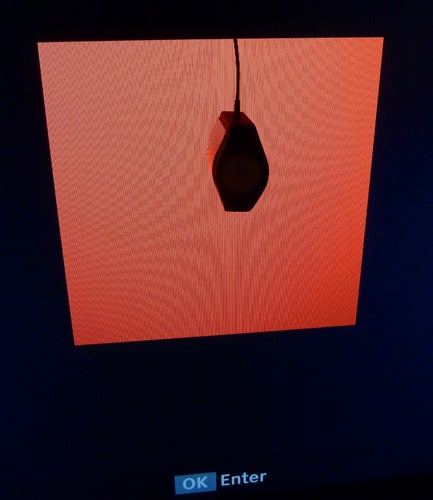
However, this camera is of very low quality and so struggles to deliver accurate identifications. Another issue with the Places system right now is that it could do with more content. Highlights are the BBC iPlayer, YouTube, and subscription services from HiT Entertainment, The Cartoon Network and Box Office 365. But overall content levels fall some distance short of what you can find on rival online systems now. You don’t even get Twitter or Facebook apps (yet) in the Social section of the Places interface. Here’s hoping Toshiba can add plenty of new services to its cloud-based service sooner rather than later.
It’s also aggravating that you can’t access the BBC iPlayer or YouTube apps through the Places menus, instead having to access them separately from the TV’s main menus.
And so, finally, we get to the 55WL863’s performance. Does all the CEVO Engine hype result in noticeably better picture quality? As a matter of fact, yes. At least within the context of Toshiba’s usual standards. 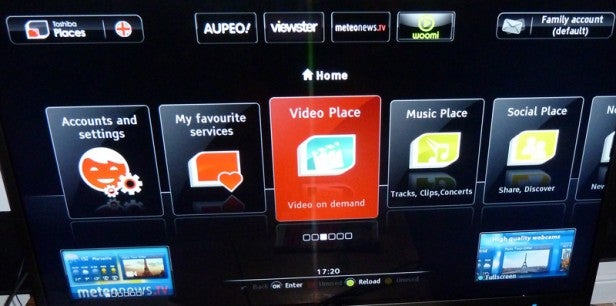
Particularly impressive is the set’s contrast performance. Bright, colourful scenes look intensely vibrant at one end of the spectrum, but dark scenes also enjoy very good black level depth.
What’s more, these convincing blacks are produced without having to sacrifice so much brightness that lots of shadow detail gets lost. In fact, if you leave the set’s LED control system on, the 55WL863 is capable of delivering really quite bright punchy colours and dark bits within a single frame.
A number of Toshiba’s TVs this year have suffered with inconsistent backlight problems. So it’s a huge relief to find the 55WL863 only very slightly affected by this distracting phenomenon. Keep the backlight set lower than its ‘60’ setting, and the most you’ll see is some faint backlight spillage jetting in from each corner during very dark scenes – a small price to pay for the image’s outstanding and consistent dynamism.
The 55WL863’s combination of brightness and good black level response helps it produce mostly excellent colours too. Tones look well-saturated and rich, but also, crucially, enjoy the sort of blend detailing and tonal range that we now recognise as distinguishing the best TVs from the average ones. It’s likely in this level of finesse that the CEVO Engine makes its presence felt.
HD images look extremely sharp and pure, while standard definition pictures enjoy some of the best upscaling around, resulting in improved sharpness and detailing without accompanying noise. Here again – and in the remarkably good upscaling of online video services too – can surely be felt the presence of the CEVO Engine.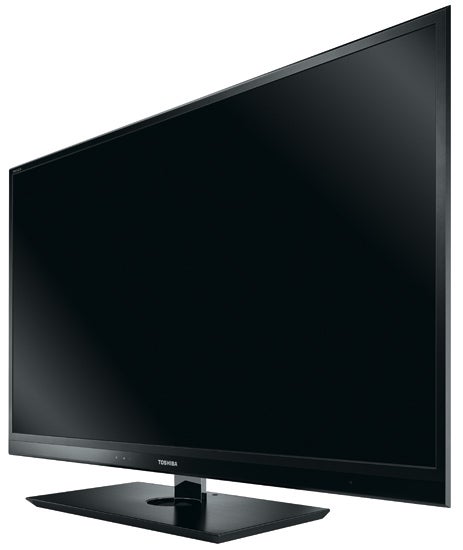
Another notable success of the 55WL863 is its motion performance. For even using the TV without its ‘Active Vision M800’ processing system active, it’s striking how little motion is affected by either judder or blur. There’s no harm in experimenting with the M800 system if you feel so inclined, mind you, as it’s actually one of the better examples of such systems. But AV enthusiasts will still be glad to hear that you don’t have to use the motion processing systems if you don’t want to.
The only significant issue we had with the 55WL863’s 2D performance was that we struggled to get a totally accurate red colour out of the screen. But this is pretty small beer, all things considered.
It’s great to find many of the 2D strengths carry on into the 55WL863’s 3D playback too. Toshiba’s 3D glasses (none of which are included for free, sadly) knock less brightness out of images than those of any rival brands, leaving colours looking rich, dark areas looking detailed, and general brightness and punch levels looking much higher than you get with most active 3D TVs. 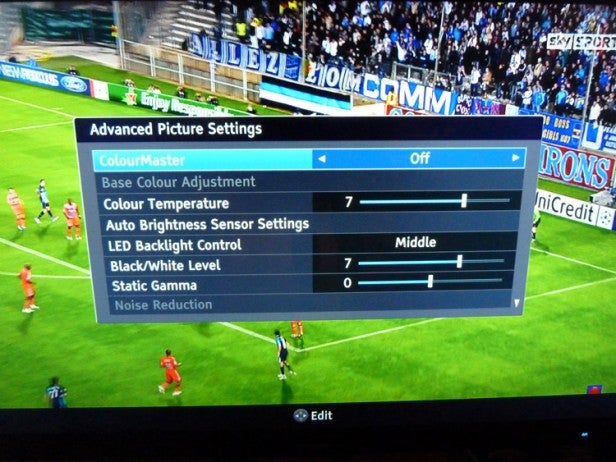
Also pretty remarkable is how sharp full HD 3D Blu-rays look on the 55WL863 thanks to the CEVO Engine’s 3D Resolution processing. Engaging this feature leaves 3D images looking more spectacularly full of detail than we’ve ever seen them look before. Awesome.
As you might expect from the strengths just described, there are times when the 55WL863’s 3D images are the best we’ve ever seen. So it’s hugely disappointing to find so much good work dented by the extent to which the 55WL863 suffers with crosstalk noise. Signs of the double ghosting noise are routinely visible over all sorts of 3D material, but are especially common and noticeable during dark scenes and when watching side by side 3D from Sky.
We were under the impression that the CEVO Engine had elements of crosstalk reduction in its processing pocket, but if this is the case it doesn’t work nearly as well as the CEVO Engine’s other attributes.
Playing a few console games through the 55WL863 reveals it to be a very
engaging screen indeed, at least in 2D. Contrast levels are rich,
colours are dynamic, the image is sharp, and best of all input lag
measured in at around 28ms – not enough to seriously damage most
people’s gaming performance.
TVs as excessively thin as the 55WL863 generally don’t produce anything substantial in the audio department. But Toshiba’s new flagship TV is a gratifying exception, as it manages to deliver surprisingly high volume levels without sounding harsh or compressed. This is a clear indication of a decently open mid-range that also makes it easier to ignore the fact that there isn’t a great deal of bass to be heard.
Verdict
Toshiba’s bid to add a high-end, enthusiast-friendly TV to its 2011 range has proved a mostly thundering success. The 55WL863 really is a superb TV, delivering some of the best picture quality yet seen from any LCD TV, as well as a good feature count. There are even moments where the 55WL863’s 3D performance breaks new quality ground.
Toshiba needs to improve its online services and reduce its 3D crosstalk noise before the 55WL863 could be considered an absolute classic TV, but it’s still quite a triumph for Toshiba and one that all but the most dedicated 3D fans would be foolish to ignore.
How we test televisions
We test every TV we review thoroughly over an extended period of time. We use industry standard tests to compare features properly. We’ll always tell you what we find. We never, ever, accept money to review a product.
Trusted Score
Score in detail
-
Features 9
-
3D Quality 8
-
Value 9
-
Design 8
-
2D Quality 9
-
Sound Quality 8
Features
| Size (Inch) | 55in |
| Display Type | LED |
| Max. Resolution | 1920 x 1080 |
| Full HD 1080p | Yes |
| Digital Tuner | Yes |
| Freeview HD | Yes |
| Freesat HD | No |
| 3D Ready | Yes |
| Contrast Ratio | 7,000,000:1 |
| Refresh Rate (Hertz) | 200Hz |
Connectivity
| HDMI | 4 (1.4) |
| Component | 1 |
| Composite | 1 |
| Scart | 1 (RGB) |
| Digital Audio Out | 1 (optical) |
| Headphone | 1 |
| Charging/Computer Connection | 2 |
| Ethernet | 1 |
| WiFi | Yes (built-in) |
Physical Specifications
| Height (Millimeter) | 840mm |
| Width (Millimeter) | 1270mm |
| Depth (Millimeter) | 360mm |
| Weight (Gram) | 25.5g |

